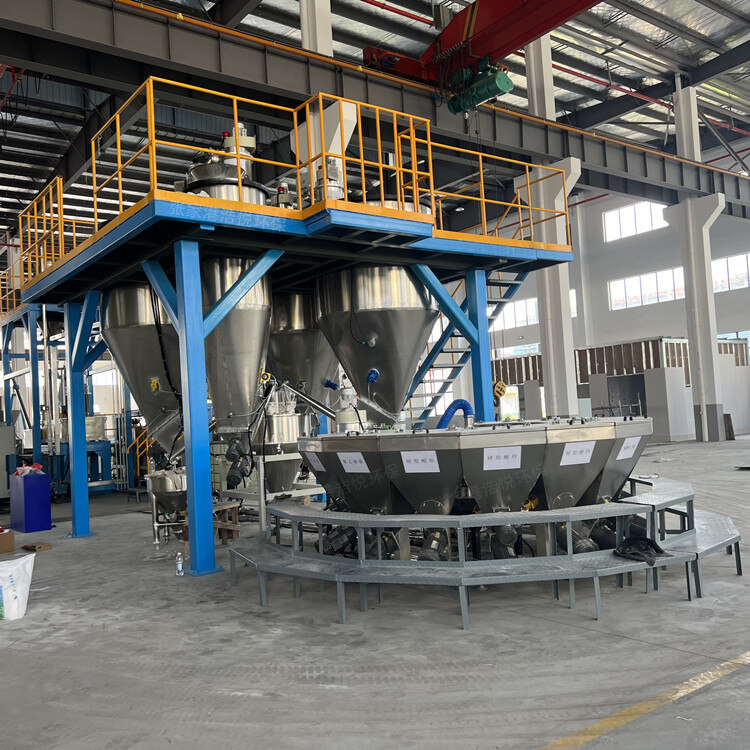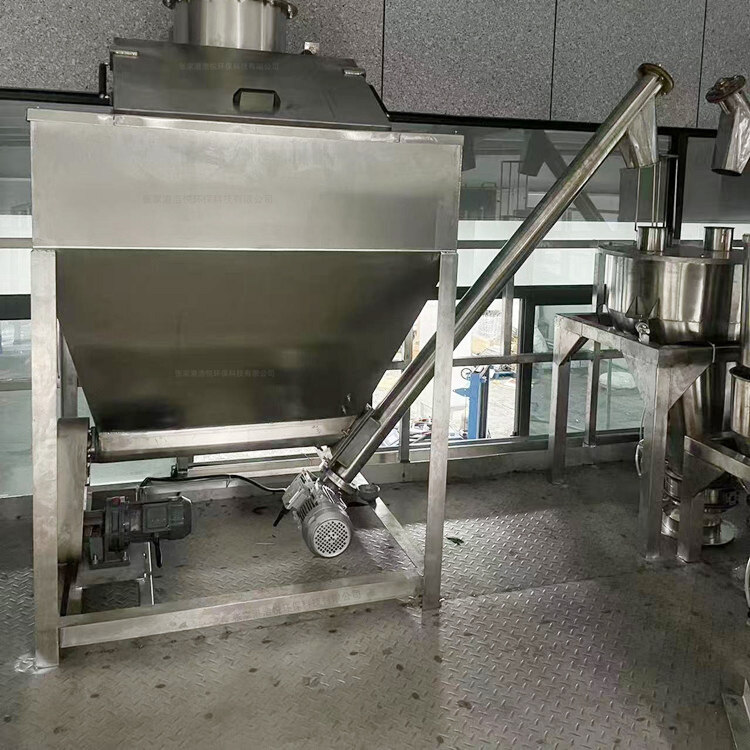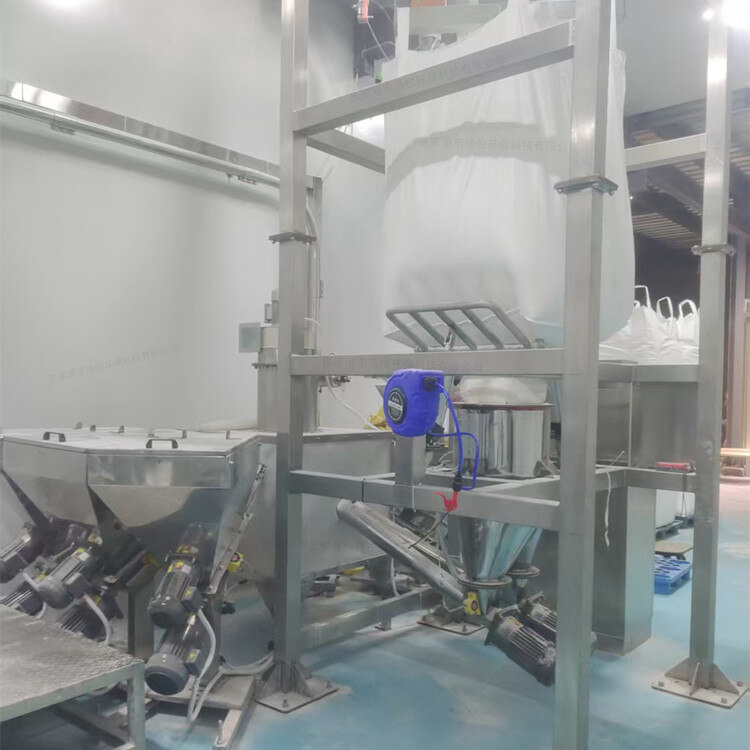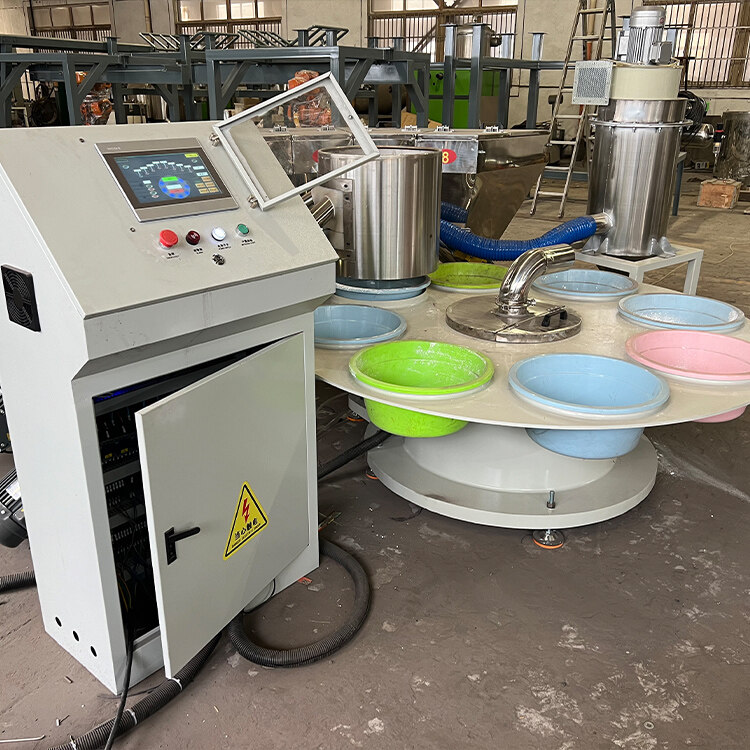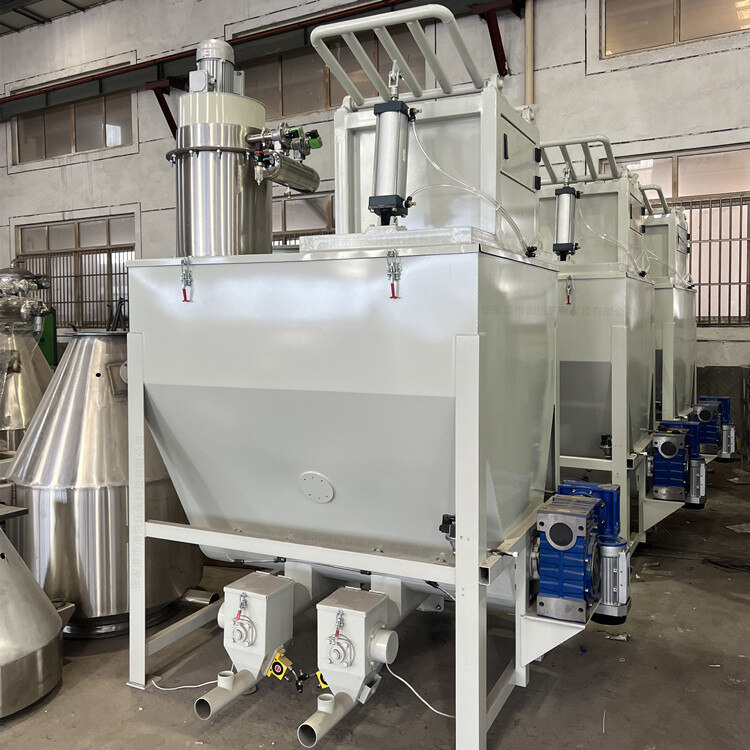- Introduction to automatic batching machine and fully automatic batching machine equipment
- The powder metering system tells you about the introduction of the mixing and drying machine
- 1000kg vacuum feeding machine
- Fully automatic small material batching system
- Research on Innovation of Automatic Weighing Machine Technology
- Design and operation of automatic batching system using PLC, industrial computer and frequency converter
Ingredient metering vacuum feeding system
- Category:Batching Plant
- Hits:211次
- Release Date:2025-06-27
- Share:
- Inquiry
- Details
In the modern production process of industries such as chemical, pharmaceutical, and food, achieving precise measurement and efficient transportation of materials has become the key to improving product quality and production efficiency. The ingredient metering vacuum feeding system provides an integrated material handling solution for enterprises with its high-precision metering capability and dust-free conveying advantages. This system deeply integrates the functions of ingredient metering and vacuum feeding, effectively solving the problems of low accuracy and high pollution in traditional material processing methods, and becoming an important equipment for promoting the transformation of industrial production towards intelligence and green.
1、 System working principle
The ingredient metering vacuum feeding system operates in conjunction with the principle of vacuum negative pressure and precise metering technology. After the system is started, the vacuum pump starts working, creating a negative pressure environment in the sealed conveying pipeline and storage device. The pressure difference between the external atmospheric pressure and the negative pressure inside the system drives the material to enter the pipeline from the feed inlet, mix with the airflow to form a gas-solid two-phase flow, and be transported along the pipeline to the designated storage bin or metering device.
In the measurement process, the system mainly adopts weighing or volumetric measurement methods. Weighing measurement uses high-precision weighing sensors to monitor the weight of materials in real time. When the weight of the material reaches the preset value, the control system sends instructions to close the feeding valve and stop the material transportation; Volumetric metering uses devices such as rotary valves and screw pumps to transport materials according to a fixed volume, and precisely controls the material flow rate by adjusting the speed of the device. The control system, as the "brain" of the entire system, is responsible for receiving sensor signals, analyzing and calculating according to preset formula parameters, and controlling the actions of actuators (such as valves and vacuum pumps) to achieve precise measurement and automatic feeding of materials.
2、 Core system composition
(1) Vacuum feeding unit
Vacuum pump: As the power source of the system, common types include rotary vane vacuum pump, water ring vacuum pump, and Roots vacuum pump. Rotary vane vacuum pump can generate high vacuum degree, suitable for scenarios with strict vacuum degree requirements and dry materials; The water ring vacuum pump has strong moisture resistance and can adapt to the transportation of materials containing small amounts of moisture; Roots vacuum pumps have the characteristics of high flow rate and high vacuum degree, and are often combined with other vacuum pumps to meet different working conditions.
Conveyor pipeline: Made of stainless steel or wear-resistant plastic material, different inner wall treatment processes are selected according to the material characteristics. For example, mirror polishing treatment can reduce material adhesion, and PTFE coating can enhance the anti-corrosion performance of the pipeline. The pipeline layout is flexible and can achieve various forms of transportation such as horizontal, vertical, and curved to adapt to different production workshop layouts.
Suction and discharge device: The suction port is designed with a special flow guide structure to ensure smooth suction of materials; Unloading devices usually use pneumatic butterfly valves, flap valves, etc., to precisely control the discharge of materials through a control system. Some of the unloading devices are also equipped with vibrators to assist in the smooth unloading of materials and prevent blockages.
Filter: used to separate materials and gases in gas-solid two-phase flow, ensuring that the discharged gas is clean and pollution-free. Filters generally use high-efficiency filter cartridges with a filtration accuracy of up to 0.3 microns, which can effectively trap small particles. At the same time, the filter is also equipped with a blowback device, which regularly cleans the filter element to prevent clogging and ensure the normal operation of the system.
(2) Measurement unit
Weighing measuring device: composed of a weighing platform, weighing sensors, and control system. The accuracy of the weighing sensor can reach 0.05% FS (full range), which can achieve dynamic or static weighing. During the dynamic weighing process, the material continuously passes through the weighing platform, and real-time weight data is collected by sensors. After signal amplification and A/D conversion, the data is transmitted to the control system, which adjusts the conveying equipment according to preset flow parameters to achieve accurate measurement; Static weighing is suitable for batch batching, where materials are measured in a static state.
Volumetric metering devices: Common ones include rotary valve meters, screw metering pumps, etc. The rotary valve gauge sends out materials in a fixed volume through the periodic rotation of the rotor; The screw metering pump uses the spiral motion of the screw to push materials, and controls the flow rate by adjusting the screw speed. The volumetric measuring device has a simple structure and is easy to maintain, suitable for measuring materials with good fluidity.
(3) Control system
Control systems typically use programmable logic controllers (PLCs) as the core, paired with human-machine interfaces (HMI). PLC is responsible for collecting sensor data, executing control algorithms, and driving actuator actions; HMI provides operators with an intuitive interface for setting formulas, adjusting parameters, monitoring operational status, and handling fault alarms. The system supports multiple recipe storage and can quickly switch recipes according to production needs; Simultaneously equipped with data recording and traceability functions, it automatically stores information such as the time, material type, and dosage of each ingredient, facilitating production management and quality analysis. In addition, the system can also be connected to the factory production management system (MES) through network interfaces to achieve data sharing and remote monitoring.
3、 Typical application scenarios
(1) Pharmaceutical industry
In pharmaceutical production, the ingredient metering vacuum feeding system is used for precise metering and dust-free transportation of raw materials and excipients. Drug production requires extremely high environmental cleanliness and material measurement accuracy. The fully enclosed conveying environment and high-precision measurement capability of this system can effectively prevent material cross contamination and ensure accurate drug composition. For example, in the tablet production process, the system accurately measures various raw materials and transports them to the mixing equipment through vacuum feeding, strictly complying with GMP (Good Manufacturing Practice) requirements to ensure drug quality and safety.
(2) Food industry
Food processing requires strict hygiene and measurement accuracy. The ingredient metering vacuum feeding system is widely used in the production processes of milk powder, seasonings, starch, etc. The equipment is made of food grade stainless steel material and transported in a fully enclosed manner to prevent dust from flying and foreign objects from entering, ensuring food safety. At the same time, the system precisely controls the amount of various ingredients added, such as accurately measuring the ratio of milk powder and nutritional additives in milk powder production, to ensure that the nutritional content of the product meets the standard; In seasoning production, ensure consistency in product taste.
(3) Chemical industry
In chemical production, it involves the treatment of various materials such as catalysts, pigments, and plastic particles. For flammable, explosive, toxic and harmful powder materials, the fully enclosed design and explosion-proof function of the ingredient metering vacuum feeding system can effectively ensure production safety. The system accurately measures various chemical raw materials to ensure stable product quality, while reducing material loss and lowering production costs.
4、 Technological advantages and development trends
(1) Technical advantages
High precision measurement: Advanced measurement technology ensures that material ratio errors are controlled within a very small range, ensuring product quality stability.
Dust free conveying: The fully enclosed vacuum conveying method effectively prevents dust leakage, improves the working environment, meets environmental requirements, and avoids material contamination during the conveying process.
High degree of automation: The entire process is automated, reducing manual intervention, lowering labor intensity, and improving production efficiency. The system can automatically measure, load, and transport materials according to preset formulas, achieving 24-hour continuous operation.
Strong flexibility: supports multiple formula storage and quick switching, and can flexibly adjust ingredient plans according to production needs; The layout of the conveying pipeline is flexible and can adapt to different production workshop layouts and material conveying requirements.
(2) Development Trends
Intelligent upgrade: Introducing artificial intelligence and IoT technology to achieve device self diagnosis, automatic calibration, and adaptive control. Optimize measurement algorithms and conveying parameters through machine learning to improve system performance and stability.
Energy saving and environmental protection: Develop energy-saving vacuum pumps and conveying equipment, optimize system design, and reduce energy consumption. Adopting new materials and sealing technology to reduce energy consumption and material loss, achieving green production.
Multi functional integration: Integrating functions such as ingredient metering, vacuum feeding and mixing, packaging, etc. to form an integrated solution, reducing equipment footprint, improving production efficiency and system integration.
Safety and reliability improvement: Strengthen explosion-proof, anti-static, and anti-corrosion design, improve safety protection devices and emergency response mechanisms, ensure stable operation of the system in complex environments, and guarantee production safety.
The ingredient metering vacuum feeding system, with its unique technological advantages, has demonstrated strong application value in many industries. With the continuous advancement of technology, this system will develop towards a more intelligent, efficient, and environmentally friendly direction, providing stronger support for the high-quality development of industrial production.


